"When You Drive Safely, You Arrive Safely" Campaign Wins IPRA Award
ZAGREB, 30 July 2021 - The Croatian public relations agency Abeceda Komunikacije has won a prestigious IPRA Golden World Award in the Country, Region and City category for the campaign "When You Drive Safely, You Arrive Safely".
The campaign was designed for the Ministry of the Interior and the award was presented by the International Public Relations Association (IPRA). It already received this year's HUOJ Grand PRix award from the Croatian Public Relations Association (HUOJ).
Abeceda Komunikacije said that the success of this campaign can be measured not just by the awards it has received but also by its results, as the number of road accidents has decreased by 31 percent, the number of those with fatal outcomes by 50 percent and those with injuries by 30.2 percent.
For more news, CLICK HERE.
Croatian Police and Deminers Rescue Several Migrants From Minefield
ZAGREB, 5 March, 2021 - Police and deminers yesterday and today rescued several illegal migrants whose lives were in jeopardy in the mine field in Saborsko municipality, after one migrant was killed and several sustained injuries in a landmine blast, the Interior Ministry (MUP) said on Friday evening.
Members of Lučko Anti-Terrorist Unit yesterday searched the area by helicopter and then warned migrants that they were in a mine suspected area and should stay in place until help arrives. Deminers of Lučko Anti-Terrorist Unit this morning started to inspect the field and create a safe corridor for evacuation and ten persons were rescued and offered medical help.
MUP said in the press release that a group of foreign nationals had illegally reached Croatia and entered a mine suspected area in a forest area in municipality Saborsko. There, a younger man stepped on an unidentified explosive device and died, while other persons from the group sustained injuries in the blast. After receiving a report, police officers found one man dead and one injured, while the rest of the group went away in unknown direction.
According to the interior ministry, at the moment six persons have an intention to make an application for international protection in Croatia, while other persons are in medical care due to having sustained injuries.The life of one of them is in danger.
The Ministry of the Interior and Croatian police, it is recalled, have been intensively underscoring the dangers of illegal migrations since 2018, especially warning of the danger of mine suspected areas, severe winter conditions in the mountains and rivers.
Bozinovic Announces Reform of Entire Ministry of Interior System
ZAGREB, Aug 8, 2020 - A reform of the Croatian police force is about to be launched and it will cover the entire system, with emphasis on digitalisation and faster work, Minister of the Interior Davor Bozinovic has said in an interview with Hina at the start of his second term in office.
"The reform will primarily put emphasis on the use of funds, digitalisation building on the potential shown by the Ministry of the Interior during the coronavirus crisis, and consequently faster work procedures and defining of operational procedures for police officers," said Bozinovic.
He added that the reform would connect the existing information systems with new European information systems, which, he said, would, among other things, increase internal border security.
The system of civil protection is also expected to be upgraded and a new law on civil protection is to be adopted, while staff will be rejuvenated and the issue of pensions and severance packages for police officers who meet retirement conditions will be regulated, said Bozinovic.
The purpose of the reform is to cut red tape as much as possible, enable the use of modern equipment and enabling police to focus on dealing with crime, making them more visible in the streets, in city neighbourhoods, said Bozinovic.
Asked if police would in the future film their work, Bozinovic said that that would be one of the reform moves, primarily for the sake of removing what are most often unsubstantiated accusations about police conduct towards citizens or foreigners on the state border.
Bozinovic went on to say that a reform of the Police Directorate was aimed at increasing the number of staff in police stations, with emphasis on operative staff.
The minister also announced a reform of the Ministry of the Interior's administrative affairs, to shift some of the administrative duties performed by the ministry onto local government bodies or legal entities with public authorities.
He said that he believed the Ministry of the Interior should only stay in charge of issuing citizenship certificates, weapon licences and regulating the stay of foreign nationals.
Asked if the reform would contirbute to border protection considering that entry into the Schengen area is one of the national priorities, Bozinovic said that considering migration trends, equipping border police would be one of the priorities of Croatian police as well as the entire EU in the years to come.
We will additionally enhance the technical protection of the border and in that process we count on considerable money to be absorbed from EU funds, he said.
Asked about the current situation with migrations, Bozinovic said that after a lull caused by the lockdown due to the coronavirus pandemic, migrations had started again following the relaxation of epidemiological restrictions and restrictions on the movement of migrants outside camps in Serbia and Bosnia and Herzegovina.
The number of illegal entries into Croatia today is 14% higher than in the same period last year, the minister said, noting that Croatia did not expect the pressure on its borders to cease but that every day it was technically and personnel-wise better prepared to protect its borders and prevent illegal entries.
Croatia Migrant Crisis: Interior Minister Will Not Send Army to Border
March 2, 2020 - Davor Božinović, the Interior Minister of Croatia, emphasised that there is no need to send the army to the border, because Croatia deals with illegal migrants daily. He added that Croatia’s border protection system maintains communication with colleagues from other countries on every level. And they are working together to pursue a diplomatic solution.
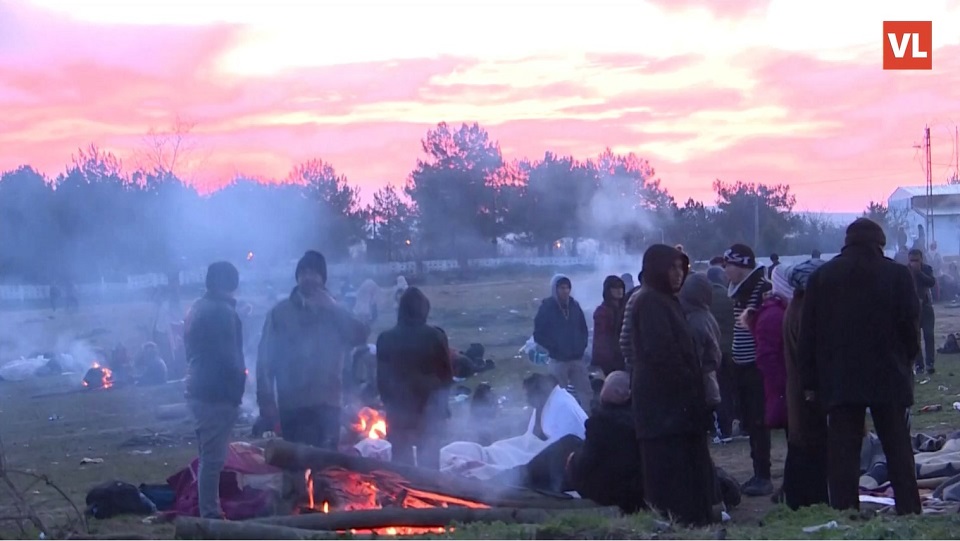
Croatia Eastern Border: No Increase in Illegal Migration
“There has been no reported increase in illegal migration on Croatia's eastern borders. The police are doing their job and the situation is no different than yesterday or the day before. Croatia has been dealing with illegal migration every day for almost three years now. That is why, even with these new circumstances, we can confirm that our border protection system fully operational and doing its job,” Interior Minister Davor Božinović said today. He noted that presently there is no need to send the army to the Croatian border, even though that remains a legal possibility, according to Marina Borovac/Večernji List on March 2, 2020.
“We will see how the situation on the Greek and Bulgarian borders develops, in relation to Turkey’s recent actions (release of migrants from their country). We are in close contact with our colleagues (from other countries) on every level. One direction we are going is certainly the diplomatic route. After all, the President of the European Council, the President of the European Commission and the President of the European Parliament will visit the Greek border tomorrow to see the situation there. At the same time, talks are underway with the Turkish leadership, which is part of the diplomatic role. The aim is to return to the EU-Turkey agreement of 2016,” Božinović added, and is confident that diplomacy would be the goal.
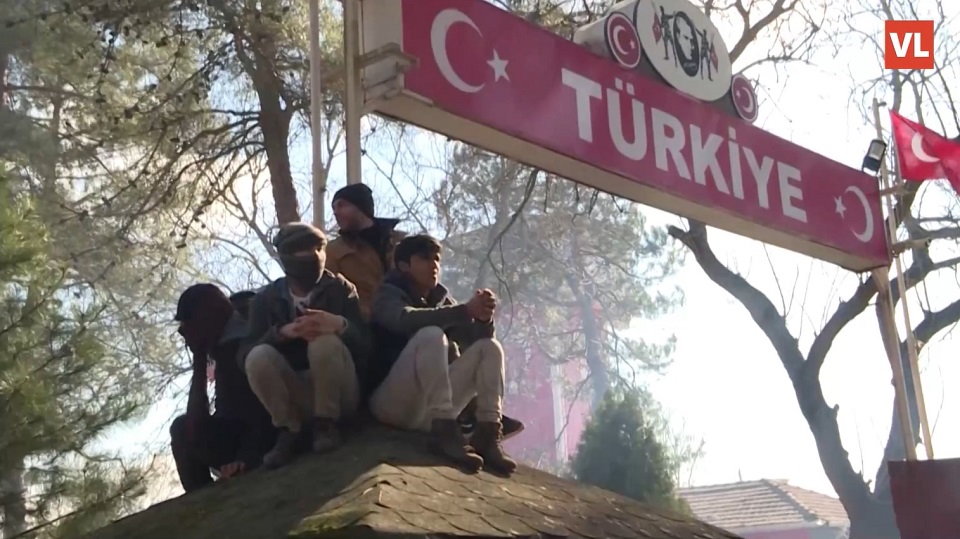
Croatia Will Discuss Border Assistance to Greece, Bulgaria
Božinović announced an upcoming meeting of European interior ministers to discuss what assistance can be sent to Greece and Bulgaria. He says both countries are committed to deterring illegal migration, which is in the wake of the new European Commission's policy regarding the protection of the EU's external borders. Božinović recalled that there was a migrant wave in 2015 because Greece had allowed migrants to pass through their territory.
“This is the only way to prevent the 2015 and 2016 scenario from happening again. Today, not only Greece, but every country has made their objectives very clear regarding the protection of their borders along the so-called Western Balkan route,” the interior minister concluded.
Croatia will emphasize its plight with protecting Europe's borders, but reiterates that the issue of the migrant crisis can only be resolved through (the agreement upon) a common European policy.
Follow our Politics page and this page to keep up-to-date on the migrant crisis along the Western Balkan route in Croatia.
Croatia: Dubrovnik Police Rescue 36 Migrants on Inflatable Dinghy in Aegean
During surveillance of the European Union's maritime border with Turkey, as part of the Frontex Poseidon mission, four naval officers from Dubrovnik, Croatia rescued 36 migrants from an unmanned dinghy in the Aegean Sea on February 10, according to Dubrovnik police who were monitoring the area.
A migrant dinghy was observed in the area from the Evros (Marica) river delta heading toward Makri, Greece. Cries were heard from the small inflatable vessel, and officers immediately came to the rescue.
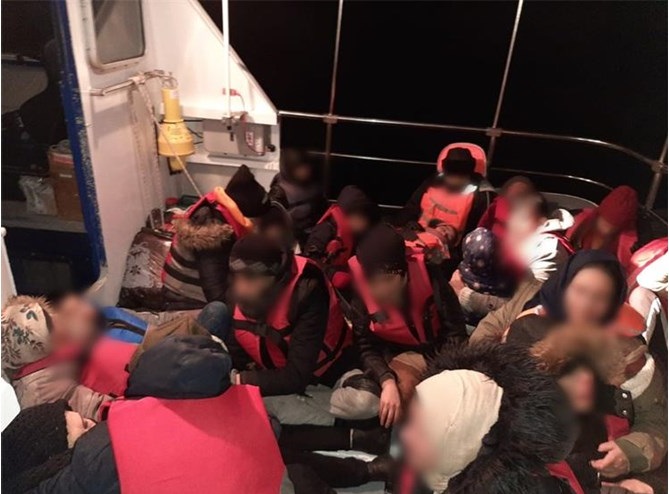
Croatia Police: Migrants on Dinghy Chilled, Dehydrated, Unconscious
"They found 36 foreign nationals on the dinghy, including five children, 11 women and 20 men. All were in poor health: chilled, dehydrated and some were unconscious. The inflatable had run out of fuel and the sea temperature where they were found was only 2 degrees Celsius. It is difficult to say what might have happened to them had they not been rescued,” the Dubrovnik-Neretva Police Department pointed out.
The migrants were transported to a police vessel where officers provided them with water, hot drinks and thermal foil to warm them, after which they were transported to the port of Alexandropolis. They were met there and put under the care of the Emergency Medical Service according to Index on February 14, 2020.
"Out of the 36 migrants, five were hospitalized, while the rest, after receiving medical assistance, were transported to a reception center following further treatment in accordance with national and European legislation," the Dubrovnik police added.
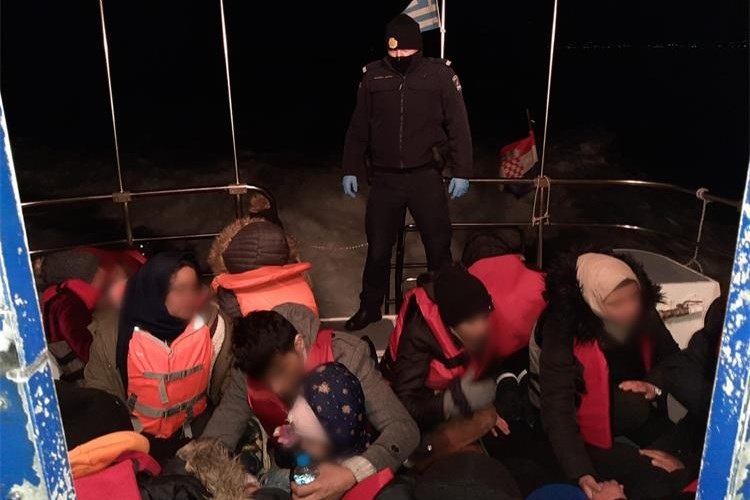
Greece Reports 60,000 Migrant Arrivals in 2019, 4,100 Arrivals in 2020
Following more than 60,000 arrivals last year, more than 4,100 refugees and migrants have reached Greek shores so far in 2020.
Recently, the Croatian parliamentary Committee on Home Affairs and National Security unanimously decided to conduct direct oversight of Croatian police work following complaints about the police treatment of migrants, Committee Chairman Ranko Ostojić (SDP) told the press after the committee meeting on February 6, 2020.
An archive of Total Croatia News coverage on the migrant crisis in Croatia can be accessed here.
Croatia Border Patrol Tracking Migrants With Portable Thermal Imaging
During the 2015 migrant crisis, Hungary and Slovenia built border barriers to thwart the influx of illegal migrants. Until recently, Croatia border guards have faced the daunting task of manually monitoring their unfenced 1,326 km border, which is also a non-Schengen EU border. However, with the help of advanced thermal imaging technology, Croatian border guards have finally gained an edge on stopping illegal migrant movement.
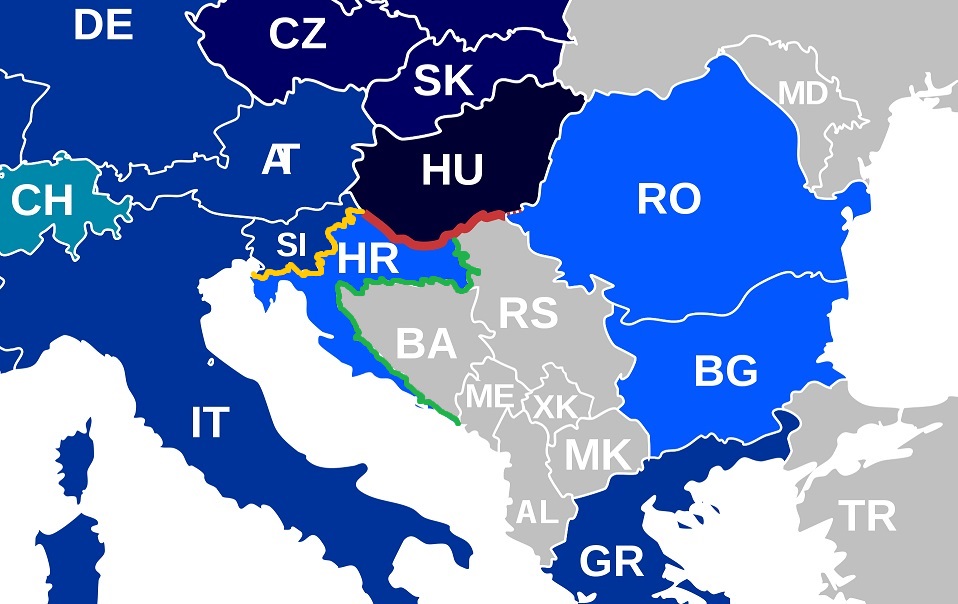
Hungary Border Fence (Red) | Slovenia Border Fence (Gold) | Croatia Border No Fence (Green) | Wikipedia
Unfenced Croatia EU Border 1,326 Kilometers Long
The Hungarian border barrier, which spans the borders of Serbia and Croatia, is 523 km long. The Slovenian border with Croatia spans 670 km. By contrast, Croatia shares a combined 1,326 km unfenced border with Bosnia and Serbia (1009 km with Bosnia, 317 km with Serbia). And migrants, many of whom are biding their time in nearby border camps, make repeated and daily attempts to enter Croatia from both countries, a practice which they call "The Game".
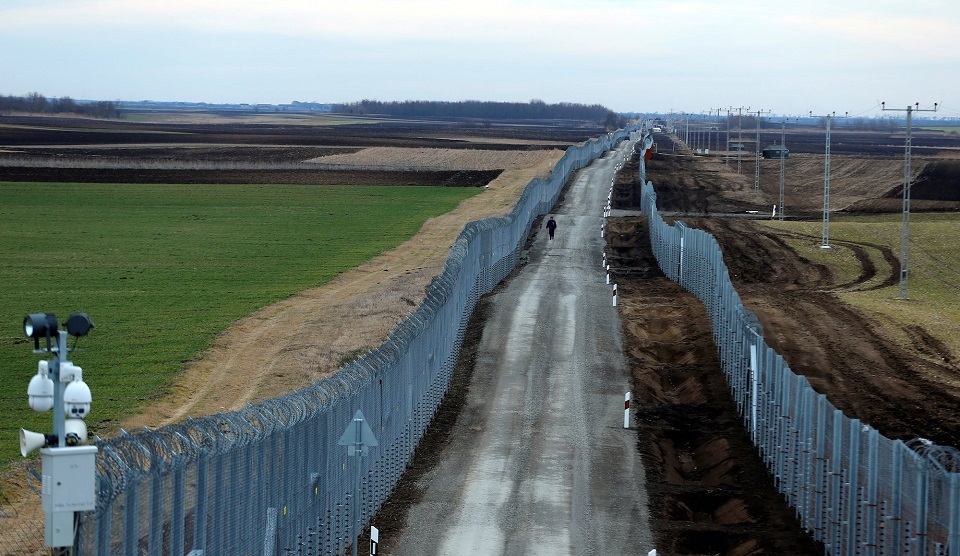
Hungary Border Fence | Wikimedia Commons
Electrified Hungarian Border Barrier Stopped Illegal Migration
Once completed in 2015, the Hungarian border barrier effectively halted migration into that country. It is equipped with parallel barbed-wire fences, floodlights, security cameras, and loudspeakers which blare warnings in English, Arabic and Farsi. The fences also deliver a mild electric shock upon contact, and have rendered any potential accusations of migrant pushbacks a moot point.
The Slovenian border barrier, while not as advanced, has also deterred attempts by migrants to enter Croatia’s Northwest neighbor. Both fences have effectively left many migrants, who are seeking entry into the Schengen zone, stranded in Croatia. While trapped in Croatia, they work with smugglers or attempt to continue their journey to Italy, Germany and France on their own.
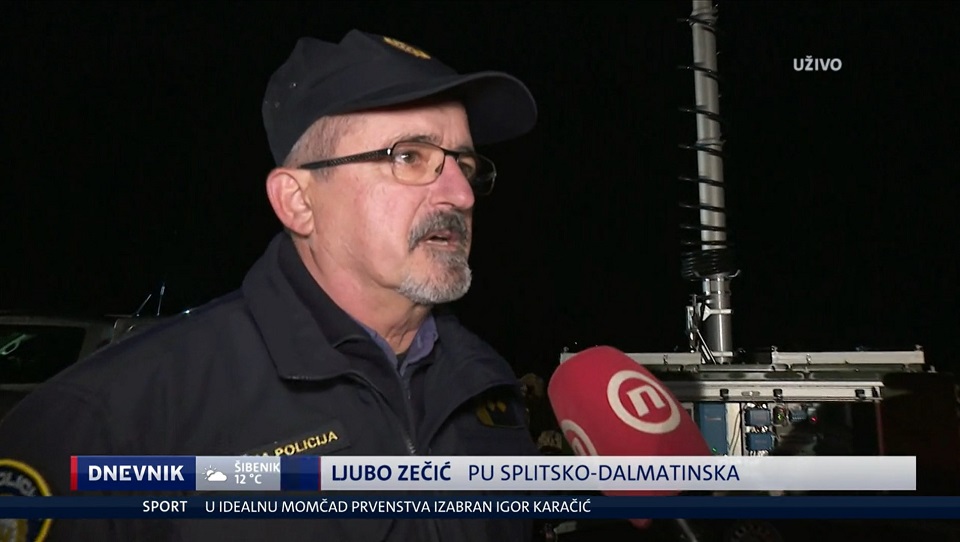
Croatia Begins Using Mobile Thermal Imaging Cameras
The Croatian border is now being protected by mobile thermal imaging cameras which can detect people illegally trying to enter Croatia from up to distance of several kilometers. The Nova TV/Dnevnik news team went to the border on January 26, 2020 and was the first to see how the 6 million EUR system works in practice.
Croatian police departments located on the illegal migrant route and roads leading to Croatia have been equipped with 17 Flir mobile camera systems.
Ljubo Zečić of the Splitsko Dalmatinska County Police Administration said that there are two devices are in their jurisdiction and indicated that it is very helpful that the system is mobile and can be easily transferred to positions which have been detected as frequent crossings.
Most Migrants Enter Croatia From Sarajevo and Mostar
"Most migrants coming from Bosnia are attempting to enter Splitsko Dalmatinska County from Sarajevo and Mostar. In 2019, our police department reported a 30 percent increase in illegal migrants and a 54 percent increase in smugglers," Zečić said.
Tomislav Poljak from the Trilj station demonstates the Flir thermal imaging device, which has already thwarted the plans of numerous migrants and smugglers to enter Croatia illegally.
"Our colleagues are walking about two and a half kilometers from us, and we can detect exactly what is happening at that distance with this device," explains Poljak.
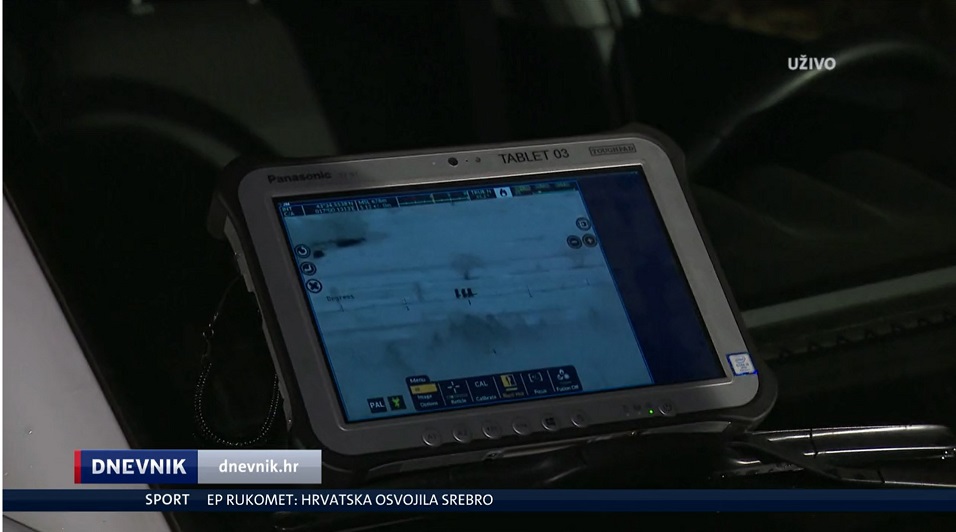
Migrant Cell Phones Permit Communication and Coordination
As soon as Tomislav's work shift began, he noticed some suspicious activity on the border. It was likely that someone was attempting to enter Croatia on a gravel road, which is often used by migrants going to Sinj. The nearest border control team was immediately dispatched to the field.
"A lot of migrants have very good cell phones and are quite well informed. And nowadays, they use temporary sim cards with these cell phones. They always have another trick up their sleeves,” Tomislav points out.
Cameras Detect Migrant Movement Across Bosnia Border
Almost a kilometer above sea level, the police officers found an abandoned truck which migrants often us to seek shelter from bad weather. Since there was no one in the truck, the Trilj border guards continued their search with manual thermal imaging devices.
"Without this technology, it would be much harder to do our job because you cannot see anything in the dark with human eyes," Zdenko explains.
The police action was soon abandoned because the suspect returned to Bosnia and Herzegovina.

Cameras Can Be Moved Within 20 Minutes
The benefits of these devices are numerous. "If we need to move it to another location quickly, it takes us maybe 15-20 minutes to pack it up and drop it off," Tomislav says.
The cost of one Flir thermal imaging camera is almost 2.7 million HRK (362,789 EUR). If you approach it; the device automatically notifies police officers on the ground and issues a verbal warning. With the help of this technology, police believe that they will finally be able to stay a step ahead of smugglers and people trying to enter Croatia illegally.
Follow our Politics page to keep track of the migrant crisis in Croatia and efforts to control illegal border movement.
Residence in Croatia: The Approval and Permit Pick Up Procedure
January the 12th, 2020 - I've written extensively on the process of gaining residence in Croatia, citizenship laws and processes, from gaining residence in Croatia to naturalising, to citizenship by marriage, descent, special interest, the latest amendments to the Law on Croatian Citizenship and much more, but what about when your residence application is actually approved?
It's surprising how often people find themselves in a bit of a pickle (for want of a better word) when their residence is approved and they're given a little white sheet of paper with a government stamp on it and their name, address and other details on it from a kind, friendly and knowledgeable administrative clerk at MUP.
Many questions I see from expats in Croatia are about what exactly needs to be done when they've either been told, or they've managed to work out that their application for residence in Croatia has been approved.
Now that you've jumped through the administrative, bureaucratic hoops, provided every document you didn't even know you had and been given the green light, just what do you do next?
Whether you're applying for temporary residence for the first time or you're a somewhat seasoned ''MUP goer'' and you're applying for your permanent residence status after five years of temporary residence, hearing of your approval and actually getting your hands on that little ID card is another hurdle.
I'm confused, am I applying for a visa or a residence permit?
In Croatia, residence permits are not visas. If you need a visa to enter Croatia as a tourist, then that is an entrance visa. If you want to reside in Croatia and apply to do so and are approved, you will receive a residence permit, or a stay and work permit, depending on the basis of your application. Visas and permits are not the same thing.
I left my phone number and/or my email address when I applied for temporary/permanent residence. Will I be contacted?
If you're a third country national (from outside of the EEA), you'll be contacted when your application has been approved, if more documentation is required, or if MUP want you to come for an interview in person. If you're an EEA citizen, you will more than likely be approved there and then, but it's worth noting that this isn't always the case.
MUP have my address as I needed to register it when I applied for temporary/permanent residence in Croatia. Will MUP pay me a visit?
Maybe. There is no definitive answer to this and it varies from person to person, nationality to nationality and situation to situation. Non EEA nationals report being visited by MUP much more than EEA nationals do. These visits take place at random and are often done as part of a residence application before it is approved, however, it has been known to happen when the person already has an approval, it sometimes happens when they already have their residence cards in their hands. As said, there's no definitive answer to this question, nor is there much apparent logic to it.
I applied for temporary/permanent residence weeks ago and have heard nothing from MUP, what should I do?
If you're an EEA citizen, this scenario is much less likely as EU law states that you have a right to residence based on freedom of movement and are therefore usually approved either instantly or very quickly after. For third country nationals, however, things are a bit different as EU law doesn't guarantee you a right to residence because you're not an EU citizen. You're governed by Croatian national law only. Your approval can therefore take a long time to receive, so it's not abnormal if you get radio silence from MUP for weeks, sometimes even longer. If you're concerned, you can always pay them a visit to ask about the progress of your application.
Rest assured, though, you will be contacted eventually.
My temporary/permanent residence was approved and I've been given a piece of white paper with my details and a stamp on it by MUP, what next?
This white piece of paper is your temporary ID while your actual biometric residence permit with your photo, OIB, address and card expiration date is being made. Don't lose this piece of paper as you'll need it when you go to pick up your ID card.
How long does it take for my ID card to be made?
Usually around 3-4 weeks.
Why did I have to provide my fingerprints upon approval?
The Republic of Croatia requires every person living there legally to provide their fingerprints to the state to be placed on a database. You will be asked when you're first approved for temporary residence, and then again when you're approved for permanent residence.
MUP have my phone number and my email address, I've been approved and they let me know, but when I went to provide my photo and fingerprints and collect my white sheet of paper/temporary ID, they didn't tell me when to come back for my card...
The time for residence permits to be made is typically 3-4 weeks, as stated above, and you will likely not be told when yours is there and ready to pick up. Sometimes people are called or emailed to let them know it's ready, but do not count on this, it isn't the norm.
How long should I wait before going back to MUP to ask if my ID card is ready/go and pick it up?
Give it about a month or so before going back in person.
Do I need to go back in person to pick up my ID card or will MUP mail it to me?
MUP will never mail you an ID card. You need to go in person to pick it up with your little white piece of paper you were given upon approval, and sign another piece of paper to declare that you have come to collect your residence permit.
Make sure to follow our lifestyle page for more information on residence in Croatia and much more.


